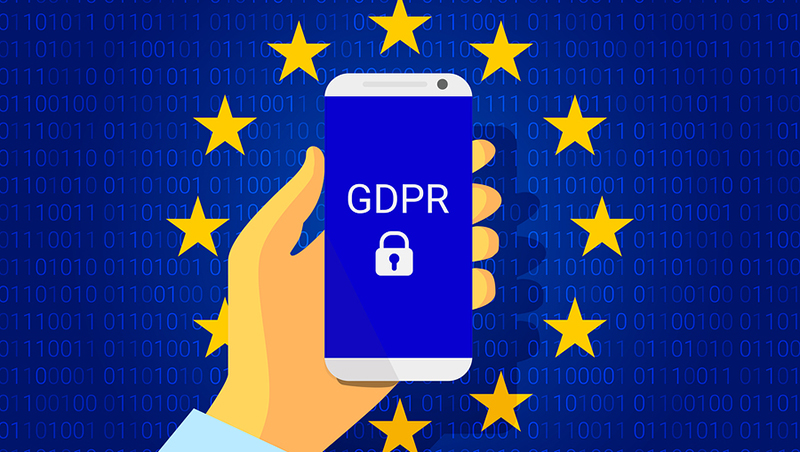Top 10 social networking tips for enterprise - part two
We conclude our two-part look at what the big social networking sites had to offer businesses.


6. Tap into Twitter with social CRM software
Andrew Yates, chief executive of Artesian Solutions suggests that the enterprise would be foolish to ignore social media as a source of sales intelligence. After all, as Yates points out, the average customer today expects you to know a lot about them so it's imperative that your sales team can leverage the social web to actively listen, engage and add value.
"Consider how a business could tap into Twitter with its 150 million net contributors to find a mention of a company, assess whether the sentiment was good or bad, understand the context of the subject matter, and then decide whether this was in some way relevant to their business, product or service?" Yates says, adding "The ability to filter the web and social media for this kind of 'inside' sales intelligence is essential".
Which is where a whole new category of social CRM software comes in, making it possible to sift through this content by intelligently deciphering what is relevant.
"By harnessing the power of social media in this way, it will be easy for companies to accelerate their sales by tracking their customers and competitors every minute of the day" Yates says.
"In a time when a single customer complaint from someone with influence can have more impact on a company's reputation than its best marketing," Rishi Dave, executive director of online marketing at Dell concludes "social media enables businesses to listen and respond instantly to customer queries, problems and comments".
7. Consider buzz monitoring software
Get the ITPro daily newsletter
Sign up today and you will receive a free copy of our Future Focus 2025 report - the leading guidance on AI, cybersecurity and other IT challenges as per 700+ senior executives
Jonny Rosemont, head of social media at DBD Media (and previously responsible for setting up and managing the social media strategy at John Lewis) has a good tip for businesses looking to dip a toe into the social media water: do your research first. "The most important thing to do is to embark in some audience analysis to identify where your customers congregate online" Rosemont says, adding "if you are a business trying to attract consumers then the likelihood is that the most popular social networks (such as Facebook and Twitter) will be areas you will need to build up a dialogue on". But, as Rosemont told IT Pro, if you are targeting a specific niche or group of individuals such as business leaders or IT buyers for example, then there might be other avenues worth considering. "There are some great buzz monitoring solutions (e.g. Radian6) that can help you find your audience" Rosemont concludes "and you could always seek agency support to help you define your priorities".
8. Update your policies
Ensure that your current policies are updated to apply content control to social media usage. Which means making sure there are guidelines in place to cover both what your staff post and what they look at. Good policy helps mitigate the risk of bad practise such as the wrong information being published on a social network or accessing content that could impinge upon the health of your network.
"You need to make sure you have clear policy and usage rights in place for both employees posting in a business and personal capacity" Greg Day, security CTO and director of security strategy at Symantec for Europe, the Middle East and Africa (EMEA) reminds us, adding that it's also important to "understand the legalities behind ownership of posted comment. You need to implement data controls and have a plan in place for any occasion that may see you needing to revoke content".
9. Know the dangers
There are some pitfalls to avoid when doing business in the social networking sphere. Knowing what they are is vital in order to be able to avoid them. Jesse Engle, vice president of social media with ExactTarget, advises that you can actually lose followers (and therefore potential customers) by "spamming or posting boring information too often" or end up in court through posting confidential information.
This is why Engle insists that employees should be "educated in the art of social conversation". Nir Zuk, CTO of Palo Alto Networks, argues that responsible use alone is not always enough.
"Companies also need to be able to monitor social network traffic in order to detect threats" Zuk told IT Pro "this can be achieved by installing a next generation firewall system which can classify and protect all application traffic on corporate networks, unlike legacy firewalls. This can be thought of as a safe enablement model, which is ultimately about striking a balance between security and user independence".
10. Don't forget the four rule of social media engagement
And finally, Manish Sablok, head of marketing for North Europe at Alcatel-Lucent, reminds us not to forget the four basic rules of social media engagement: listen, prioritise, engage, integrate.
"Through true integration, companies gain the ability to listen to consumer sentiment about their brands and to prioritize customer sentiments to determine the appropriate actions, engaging with consumers as never before" Sablok says, concluding "Good social media practice integrates the resulting interactions across marketing, customer service, and other customer touch points to deliver a truly satisfying customer experience".
Davey is a three-decade veteran technology journalist specialising in cybersecurity and privacy matters and has been a Contributing Editor at PC Pro magazine since the first issue was published in 1994. He's also a Senior Contributor at Forbes, and co-founder of the Forbes Straight Talking Cyber video project that won the ‘Most Educational Content’ category at the 2021 European Cybersecurity Blogger Awards.
Davey has also picked up many other awards over the years, including the Security Serious ‘Cyber Writer of the Year’ title in 2020. As well as being the only three-time winner of the BT Security Journalist of the Year award (2006, 2008, 2010) Davey was also named BT Technology Journalist of the Year in 1996 for a forward-looking feature in PC Pro Magazine called ‘Threats to the Internet.’ In 2011 he was honoured with the Enigma Award for a lifetime contribution to IT security journalism which, thankfully, didn’t end his ongoing contributions - or his life for that matter.
You can follow Davey on Twitter @happygeek, or email him at davey@happygeek.com.
-
 Third time lucky? Microsoft finally begins roll-out of controversial Recall feature
Third time lucky? Microsoft finally begins roll-out of controversial Recall featureNews The Windows Recall feature has been plagued by setbacks and backlash from security professionals
By Emma Woollacott Published
-
 The UK government wants quantum technology out of the lab and in the hands of enterprises
The UK government wants quantum technology out of the lab and in the hands of enterprisesNews The UK government has unveiled plans to invest £121 million in quantum computing projects in an effort to drive real-world applications and adoption rates.
By Emma Woollacott Published
-
 What is your digital footprint?
What is your digital footprint?In-depth Your digital footprint is always growing – so we explore how you can keep it under control
By Maggie Holland Last updated
-
 Nine top GDPR tips for email marketing strategies
Nine top GDPR tips for email marketing strategiesIn-depth It's not all doom and gloom – here's how you can make GDPR work for you
By Zach Cooper Last updated
-
 Why GDPR creates a "vicious circle" for marketers
Why GDPR creates a "vicious circle" for marketersNews Customers will control the forthcoming trust economy, predicts Aprimo
By Rene Millman Published
-
 Facebook will allow adverts to target users based on beliefs
Facebook will allow adverts to target users based on beliefsNews The company will also give users opt-ins to use facial recognition to prevent impersonation
By Rabbil Sikdar Published
-
 Tim Berners-Lee: How we can win back the web
Tim Berners-Lee: How we can win back the webNews The public must reject misinformation and keep control of their own data
By Clare Hopping Published
-
 Social network users play fast and loose with data privacy
Social network users play fast and loose with data privacyNews Over-sharing puts users at risk of identity theft and fraud
By Jane McCallion Published
-
 UK government Facebook data requests grow 71%
UK government Facebook data requests grow 71%News Only US and India ask for more user details from the social network
By Adam Shepherd Published
-
 Virginia shooting - don't open that link!
Virginia shooting - don't open that link!Opinion Scammers and cyber criminals love to capitalise on tragedy, and we can't help but click
By Jane McCallion Published